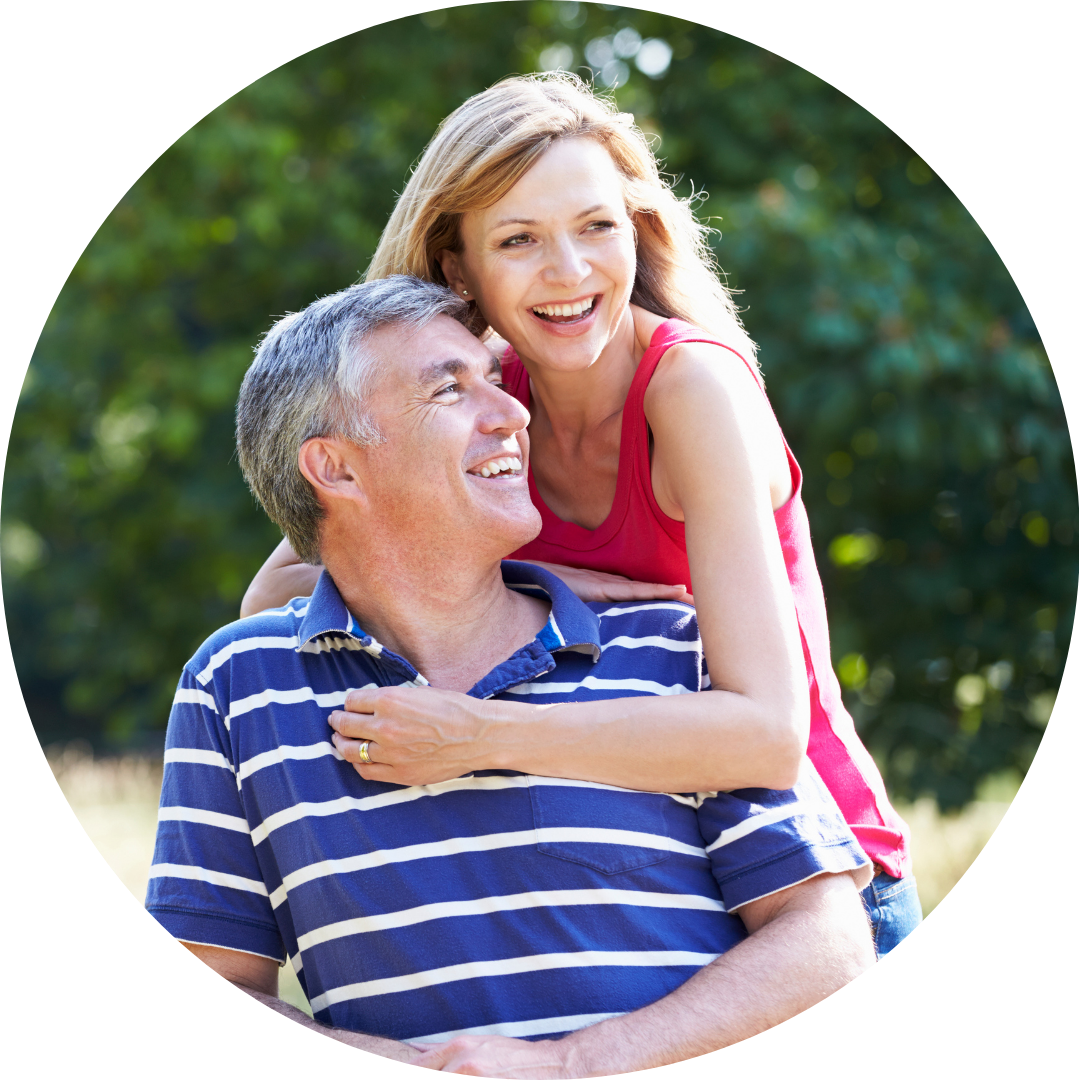NeuroStar® TMS Therapy
FDA-cleared, non-medication depression treatment
Existing Patients For Providers →
(855) 940-4867
Greenbrook can help with NeuroStar® Transcranial Magnetic Stimulation (TMS) therapy. NeuroStar TMS is a FDA-cleared, non-medicated treatment for depression.
Greenbrook can help with NeuroStar Transcranial Magnetic Stimulation (TMS) therapy. NeuroStar TMS is a FDA-cleared, non-medicated treatment for depression.
FDA-cleared since 2008
Antidepressants have worked to treat depression for many people since the 1980s, but they don't work for everyone. NeuroStar TMS therapy isn’t an antidepressant medication. Instead, it works by using gentle magnetic pulses.
Targeted to you
Unlike medications, which affect the entire body as they pass through the blood-brain barrier, NeuroStar TMS therapy targets depression at the source. That means you don’t have to put up with drug-related side effects, such as gastrointestinal problems, trouble sleeping, or weight gain.
Go right back to your day
Unlike other forms of brain stimulation, NeuroStar TMS therapy is non-invasive and non-sedating. Treatment sessions take place in our private centers and you can drive yourself to and from treatment. You can go back to work or school right away.
Dedicated to you
Your Care Team – providers, Consult Coordinators, Technicians – are here for you. We work with you every step of the way to ensure you're getting the care you need. Your Technician will be with you during treatments and you're free to chat with them or just sit and relax.
FDA-cleared since 2008
Antidepressants have worked to treat depression for many people since the 1980s, but they don't work for everyone. NeuroStar TMS therapy isn’t an antidepressant medication. Instead, it works by using gentle magnetic pulses.
Targeted to you
Unlike medications, which affect the entire body as they pass through the blood-brain barrier, NeuroStar TMS therapy targets depression at the source. That means you don’t have to put up with drug-related side effects, such as gastrointestinal problems, trouble sleeping, or weight gain.
Go right back to your day
Unlike other forms of brain stimulation, NeuroStar TMS therapy is non-invasive and non-sedating. Treatment sessions take place in our private centers and you can drive yourself to and from treatment. You can go back to work or school right away.
Dedicated to you
Your Care Team – providers, Consult Coordinators, Technicians – are here for you. We work with you every step of the way to ensure you're getting the care you need. Your Technician will be with you during treatments and you're free to chat with them or just sit and relax.
83%
83% of patients who completed NeuroStar TMS therapy experienced measurable depression relief.
62%
62% of patients who completed NeuroStar TMS therapy experienced full remission of their depression symptoms.
Real Lives, real stories
Like: Talk therapy & Antidepressants
Many of our patients have tried multiple treatment methods before finding success with NeuroStar TMS.
“Now that I’m at the end phase of NeuroStar TMS treatments at Greenbrook Mental Wellness I feel a lot better. I am noticing I have more energy, I am laughing more and I’m not as withdrawn.“


“Now, even on my bad days I’m able to be productive, at least talk to friends or go for a walk. I feel better, and I would credit that to the treatment itself but also to interacting with the staff at Greenbrook Mental Wellness.”
“Those little ups and downs are easier to take in stride. My anxiety and depression aren’t in my way anymore.”

You will first talk with one of our intake specialists, who will collect some basic information and arrange a meeting with one of our Consult Coordinators. The Consult Coordinator can meet with you in person, over video conference, or on the phone and will review your history and explain aspects of NeuroStar TMS treatment.
Our treatments are covered by most major insurances. Your Consult Coordinator will also explain treatment payment options, including going over standard insurance plan criteria with you.
We will coordinate with your health insurance provider to determine benefits.

Next, you will meet with a Greenbrook affiliated provider for an evaluation which includes questions about your history and symptoms.
If the provider has determined that you are a candidate for NeuroStar TMS therapy and you are ready to move forward, they will create your individualized treatment plan.
Because it is important to determine how to most effectively administer your individual treatment, your first session may last up to an hour and a half. During this appointment, we’ll identify the correct magnet strength and coil position for you.
Arriving at the Center
When you arrive at the center, we will have you relax in the chair. The technician and Greenbrook provider will adjust the chair so that you are comfortable. Then, you will be given earplugs to wear for the session.
Mapping
During treatment, you'll remain awake and alert while the NeuroStar TMS therapy device delivers magnetic pulses to the specific areas of your brain known to regulate mood.
We start with a test to determine your motor threshold. The magnetic coil is placed on your scalp, and gentle magnetic pulses cause the patient’s right thumb to move. This test identifies the magnetic field strength used during your treatment and is customized to deliver the correct treatment dose.
Treatment
After the mapping, you will begin your first 18-45-minute treatment. You can watch TV, read, or use your phone during this treatment.
The pulses feel like tapping on your scalp. Most of our patients say that they take some getting used to, but they aren't usually painful. If you're feeling discomfort, let us know, and we'll make adjustments.
After treatment
After the treatment is finished you can leave immediately and can resume your daily activities, such as work or school. NeuroStar TMS requires no downtime.
The most important question
Non-drug and FDA-cleared
Non-invasive with no drug-related side effects.
Covered by most insurance
We handle the paperwork.
Fits into your existing treatment
Can be stand-alone treatment or along with your existing medication.
Zero downtime
Drive yourself to and from treatments. Get back to your day right away, including work or school.
Non-drug and FDA-cleared
Non-invasive with no drug-related side effects.
Covered by most insurance
We handle the paperwork.
Fits into your existing treatment
Can be stand-alone treatment or along with your existing medication.
Zero downtime
Drive yourself to and from treatments. Get back to your day right away, including work or school.
Other applications
NeuroStar TMS therapy is indicated for multiple conditions, with more research being done every day
No. NeuroStar TMS operates differently from electroconvulsive therapy (ECT). TMS specifically targets areas of the brain associated with depression through magnetic pulses, whereas ECT induces a seizure across the entire brain. The treatment processes also differ significantly. TMS is non-sedating and can be performed in outpatient settings, like a Greenbrook office, allowing you to drive yourself home afterward without any recovery time. In contrast, ECT requires anesthesia and must be administered in a hospital, meaning you'll need someone to drive you home after the procedure.
NeuroStar TMS is fundamentally different from medications and talk therapy, operating through a unique mechanism of action. While medications affect the entire body as they cross the blood-brain barrier, NeuroStar TMS specifically targets the brain areas associated with depression and mood regulation. Because NeuroStar TMS is not a medication, you won’t experience common drug-related side effects like gastrointestinal problems, trouble sleeping, or weight gain.
Most patients experience a gentle tapping sensation during NeuroStar TMS treatment, typically felt under the electromagnetic coil on the scalp. This sensation arises from the magnetic field stimulating the muscles and nerves in the brain. Most people find the treatment quite comfortable. That's why we encourage you to use your phone, watch TV, chat with our technicians, or read a book while you’re receiving treatment.
"The first day of your treatment, we do what's called the brain mapping where we figure out exactly where on an individual's brain we need to do the treatment." - Dr. Misty Borst
"If you are doing TMS in an area of the brain that is already working correctly, it won't really do much. Think of it like this, if you take Motrin because your knee hurts the pain goes away. If you take Motrin and your knee feels fine, your knee will continue to feel fine. TMS is a lot like that.”- Dr. Geoffrey Grammer
If someone has experienced significant benefits from NeuroStar TMS therapy, it’s entirely possible to reduce or even discontinue medications. The decision to stop medication is highly personal and should be discussed with your healthcare providers. Your Greenbrook provider will collaborate with your primary care provider to determine the best approach for you, and your input will be an essential factor in how you proceed with or without medication.
Greenbrook supports an accessible internet. If you have any questions about our accessibility features, please contact us at
(855) 940-4867 or info@greenbrooktms.com.
All Rights Reserved | Greenbrook TMS NeuroHealth Centers.